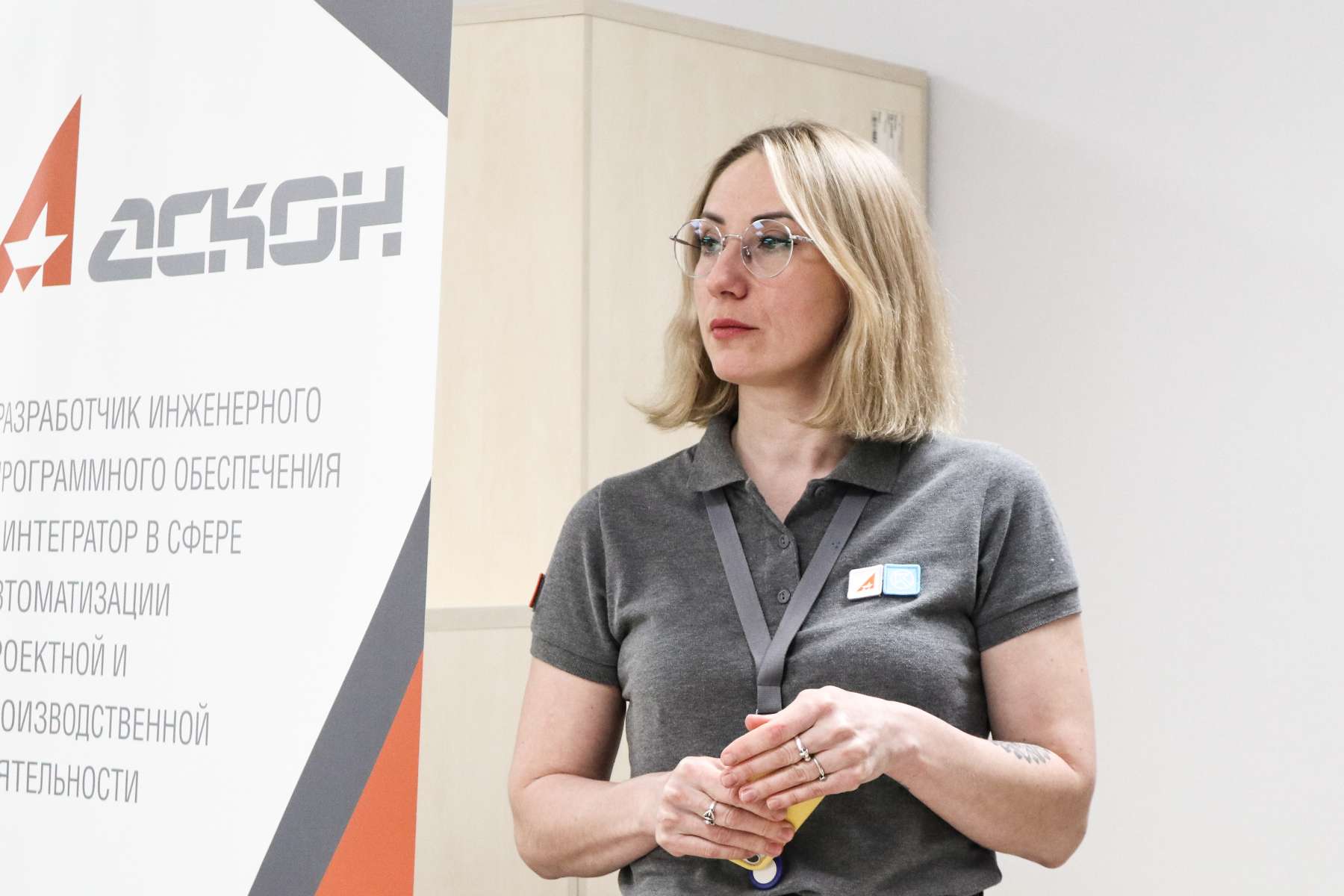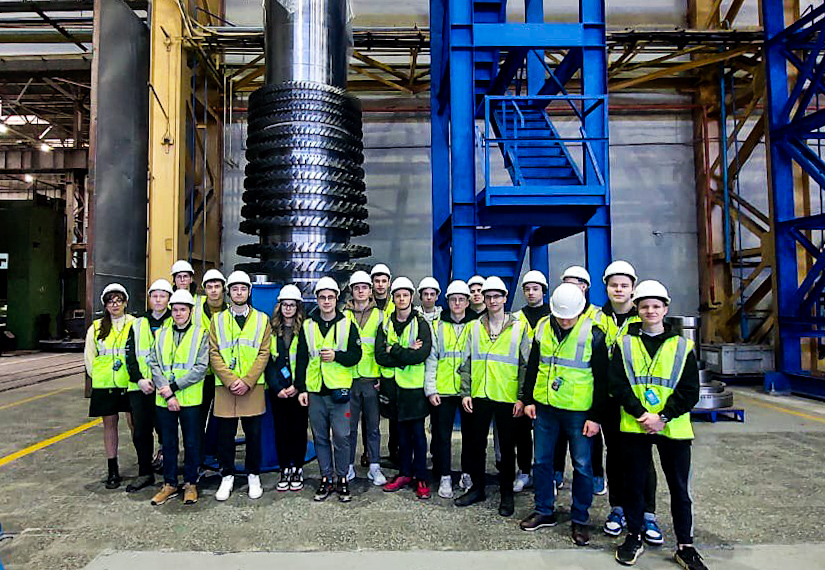
Alexandra Semenova, leading design engineer in the hydraulic calculations sector of JSC "Power Machines" LMZ and a lecturer of SPbPU, answered our questions.
- About the beginning of my career:
I graduated from Leningrad Mechanical Institute in 1991 with a degree in mechanical engineering, specializing in flight dynamics. I joined hydropower engineering at Leningradsky Metallichesky Zavod in 2001, in hydraulic calculations sector. There was a hydrodynamics class at the institute, so I knew the basic mechanics of liquids and gases. But I had to study the working process and design of hydraulic turbines. Colleagues helped me a lot and there are a lot of good monographs. Gradually, I have learned how to conduct hydrodynamic calculations by myself in order to study the influence of parameters on the operating characteristics of hydraulic turbines, as well as to design flow-through parts of hydraulic turbines and impellers. I like my work, it is very interesting when you know that hydraulic turbines work with your participation, and not only in our country, but also, for example, in South America.

- About my work at Polytech
In 2015 I defended my PhD thesis in the field of 05.04.13 - Hydraulic machines and hydropneumatic units. The topic of the dissertation was devoted to the design of blade systems of a rotary vane hydraulic turbine using optimization algorithms. In 2015, in parallel with my work as a design engineer, I started teaching at Peter the Great St. Petersburg Polytechnic University. I believe that students benefit from communicating with professors who work in industry, and working at the university allows me to broaden my horizons, gain new experience and has a positive impact on my professional activities.
I teach a course "Hydropower plants" for 3rd year students . Hydropower plant is an enterprise where the mechanical energy of the water flow is converted into electrical energy, or vice versa, electrical energy is transformed into the mechanical energy of water. Hydropower plants include hydroelectric power plants (HPPs), pumped storage power plants (PSPPs), tidal power plants (TSPPs), and pumping stations.
The purpose of this course is to provide students with an understanding of the hydraulic structures they will be designing hydraulic equipment for. It is worth noting that water is a renewable source of energy, i.e., hydroelectric power plants refer to renewable energy, but because of their scale and traditional nature, HPPs are more often referred to as a traditional energy source.
Hydrotechnical structures of hydroelectric power plants provide the necessary concentration of water flow and head. Under the action of gravity water moves from the upstream to the downstream, rotating the turbine impeller. In the turbine, the potential energy of the water is converted into the mechanical energy of the shaft rotation, and the generator connected by the shaft to the turbine converts this energy into electrical energy. Exactly HPPs play an important role in ensuring the reliability and efficiency of the entire power system of the country, they, due to their high maneuverability, smooth out power consumption spikes (maintaining a balance between generation capacity and consumption capacity) and provide in our sockets a stable frequency of electric current of 50 Hz. It is also worth noting that the reservoirs created by hydroelectric dams have a complex purpose and provide a reliable water supply, river transport operation and flood protection. Pumping stations provide the necessary flow of water with the required head. The following types of pumping stations are distinguished in the field of water management: water supply, sewage, irrigation and drainage. Pumping equipment for each type has its own characteristics. For example, one of the requirements to pumps for sewage stations is non-clogging.
- Work at Power Machines JSC LMZ and solution of urgent problems of the hydropower industry
My main place of work is JSC "Power Machines" LMZ. I work as a leading design engineer in the hydraulic calculations sector. The main job of an engineer in our sector is to ensure a high level of efficiency and practically cavitation-free operation of a hydraulic turbine. Cavitation is a serious foe of hydraulic equipment, it eats up thousands of tons of metal per year and imposes restrictions on the capabilities of hydraulic machines, because it can lead to a drop in efficiency and, as a result, to power failure, noise and vibration of the hydraulic machine, as well as metal erosion.
It is known that cavitation was first encountered when the destroyer "Daring" in 1894 could not reach the design speed during the sea trials. English hydrodynamic engineers correctly explained what was happening. At high speeds, such a low pressure can occur at the blades that the liquid breaks and cavities form in it - caverns. This is how the term cavitation came about. Further encounter with cavitation was even more unpleasant, shipbuilders discovered that the propellers of ships were rapidly deteriorating, cavitation was literally eating them away.
Hydropower also faced this harmful phenomenon. For example, at the Dnieper hydroelectric plant, cavitation caused water hammer and vibration in hydraulic turbines. At that time, this phenomenon was difficult to predict, methods of numerical modeling were only developing and measures to combat cavitation were developed experimentally. Now the power and cavitation characteristics of hydraulic machines are well predicted by hydrodynamic calculation methods. This makes it possible to design new flow parts, operating in a wide range of pressures and capacities, as well as to increase the generated capacity of existing hydroelectric power plants during reconstruction, while ensuring reliable and stable operation of equipment with minimal cavitation wear. Such calculations require specialists, in addition to knowledge of the hydraulic turbine operating process, to be skilled in engineering drawing systems (CAD) and engineering calculation systems (CAE). However, the flow part and the impeller are not the whole hydraulic turbine. It is necessary to design all the nodes and working mechanisms of a hydroturbine, its auxiliary equipment, automatic control system, perform strength estimation, manufacture and assemble. This is what Leningradsky Metallichesky Zavod is doing.
Now our company has a lot of work. Reconstruction of such large hydroturbines as turbines of Volzhskaya, Zhigulevskaya, Votkinskaya and Mainskaya hydroelectric power plants is going on. Construction of new facilities and reconstruction of existing ones in Dagestan and Kabardino-Balkaria is going on. There are plans to complete completion of the hydro power plant in the permafrost zone (Vilyuyskaya HPP-3). Power Machines is also reconstructing and constructing new HPPs in Uzbekistan.
- About the career opportunities and requirements for specialists
Shaping the energy industry of the future is based on the development of renewable energy, smart grid infrastructure and energy storage systems, which, along with other technological solutions aimed at changing the basic parameters of the energy system, will create its new architecture. The strategy of RusHydro Group (the largest generating company in our country) with a view to 2035 is focused on the development and modernization of low-carbon generation, primarily hydro generation, including small HPPs, as well as SES and WPPs as part of hybrid power facilities to replace diesel generation in remote and isolated areas. Specialists who will come to work in the industry must have system knowledge in the field of energy in general and hydropower in particular and understand the production process from beginning to end and, as a consequence, be able to improvise when solving a problem that goes beyond the template.




